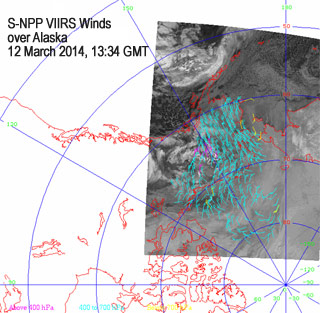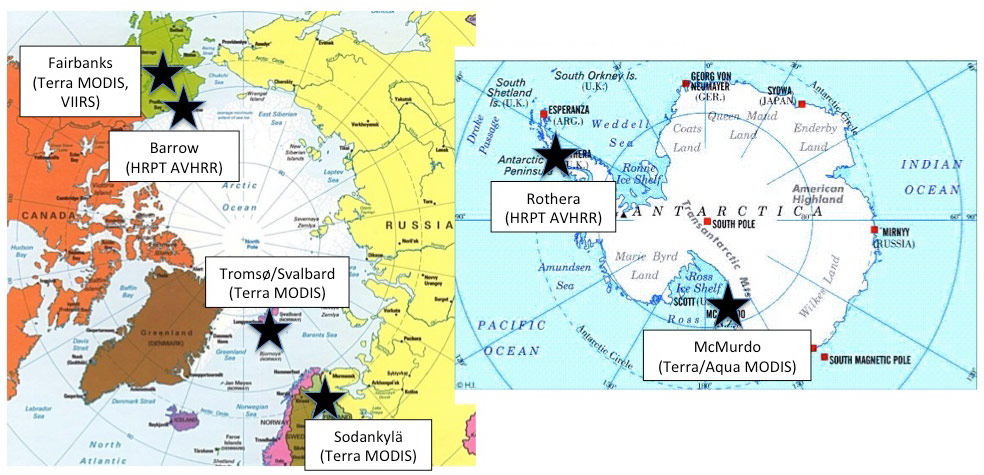First Direct Broadcast VIIRS Polar Winds
 18 March 2014 - The first direct
broadcast Visible Infrared Imaging Radiometer Suite (VIIRS) polar winds
have been generated by CoRP's Advanced Satellite Products Branch with
data from the University of Alaska-Fairbanks receiving system on 12
March 2014. The winds are produced on-site at the NESDIS Fairbanks
Command and Data Acquisition Station (FCDAS, aka Gilmore Creek). 18 March 2014 - The first direct
broadcast Visible Infrared Imaging Radiometer Suite (VIIRS) polar winds
have been generated by CoRP's Advanced Satellite Products Branch with
data from the University of Alaska-Fairbanks receiving system on 12
March 2014. The winds are produced on-site at the NESDIS Fairbanks
Command and Data Acquisition Station (FCDAS, aka Gilmore Creek).
STAR / CoRP's Advanced Satellite Products Branch and the Cooperative
Institute for Meteorological Satellite Studies (CIMSS) have been
producing polar winds products from MODIS and AVHRR and distributing
then to various numerical weather prediction (NWP) centers around the
world since 2002, though they weren't operational in NESDIS until some
years later. Polar winds are generated at direct broadcast (DB) sites
simply to reduce latency; i.e., the time it takes to generate and
deliver the winds to NWP centers. Conventional (non-direct broadcast)
MODIS and AVHRR winds aren't available for 2-5 hrs due to the delay in
availability of the satellite data. At direct broadcast sites winds are
available in about 20 minutes.
ASPB/CIMSS currently generates polar winds at 5 direct broadcast sites; 3 in the Arctic
and 2 in the Antarctic. (map) There are antennae in 6
locations, but the Barrow data are sent to Fairbanks for processing. ASPB/CIMSS has
computers in each location so all the processing is done on-site. Then the small
wind data files are sent back to Madison where they are distributed to NWP
centers and to EUMETSAT, which broadcasts them via EUMETCast.
Fairbanks is the first of the DB sites where ASPB/CIMSS is doing polar winds from
VIIRS. The VIIRS data are from a University of Alaska-Fairbanks satellite
antenna system, which are then sent to the NESDIS Fairbanks Command and Data
Acquisition Station for processing.
Polar Wind Direct Broadcast Sites

|

